How to Cook Wagyu Ribeye Steak. Gorgeous fatty Wagyu ribeye is best when pan-seared quickly on the stovetop.
I visited Japan for 2 glorious weeks, with stops in Kobe, Kyoto, and Tokyo. Of course, I had to try Kobe beef. (It was amazing). And I tried Matsusaka beef at a Tokyo market (It was every bit as good as the famous Kobe beef). When I got home, of COURSE I had to try to cook some Japanese steaks for myself.
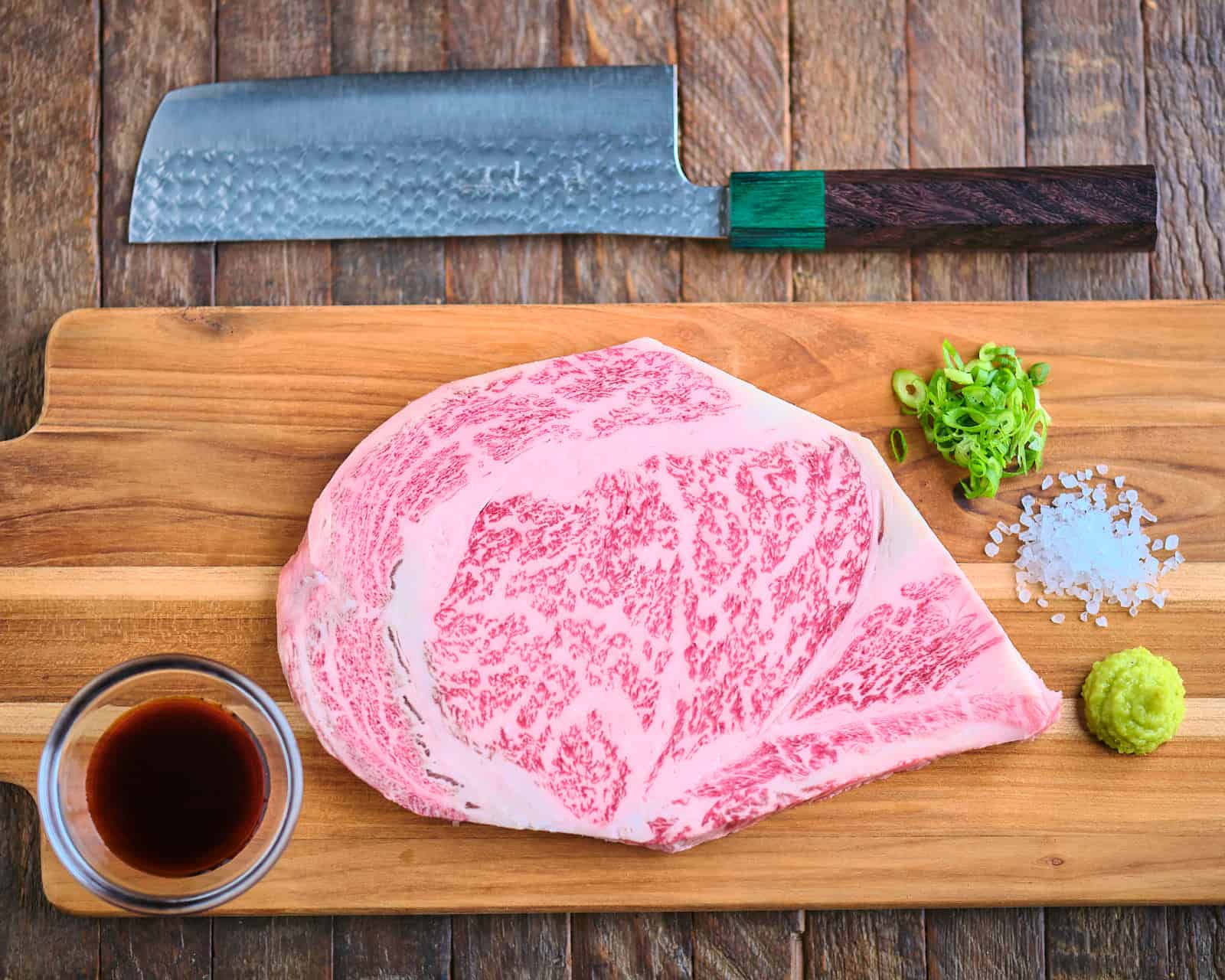
Would you like to save this recipe?
Jump to:
Luckily for me, my local grocery store (Acme Fresh Market) is selling Wagyu ribeye on weekends this summer. (And a special shout-out to James, the meat department manager, who made sure they had it for me last weekend.)
Wagyu is beef raised in America, from Japanese cattle, in the Japanese style, and the ribeye steaks were the most marbled meat I've ever bought. The steaks were light pink, not the usual red, because there was so much intramuscular fat.
Wagyu is a challenge to cook. All that fat melts as you cook it, and if you're on a grill, that results in massive flare-ups. So, instead of my grill, I moved indoors to a ripping hot cast iron pan.
How is Wagyu beef different from Kobe beef?
Kobe beef cattle must be purebred Japanese Black Tajima Gyu, with bloodlines going back for generations to the Tajima region in the Hyogo province. (Kobe is in Hyogo). Japanese Black cattle have a lot of intramuscular fat, giving Kobe Beef that incredibly marbled texture. Each carcass is then graded from A1 to A5, with A5 Kobe Beef being the most marbled.
Japanese beef is not just from Kobe. Matsusaka beef, Omi beef, Yonezawa beef, and Hokkaido snow beef are other famous brands of Japanese beef. They're from Japanese Black cattle raised in different regions, each with strict rules about breeding and grading. They are also extraordinary. (I had both Kobe and Matsusaka beef, and I can't tell you which was better. They were both fantastic.)
Kobe beef is incredibly rare outside of Japan. If you don't see the Kobe beef Designated Registration statue shown proudly by the restaurant, it's not true Kobe beef.
What is Wagyu Beef?
Wagyu beef comes from Japanese Black cattle raised outside Japan, mainly in Australia and America. Wagyu literally means Japanese cattle. The two symbols in the name, 和牛, are Wa (Japanese) and gyu (cattle) in Japanese.
Wagyu beef still grows with that incredible intramuscular fat, even outside Japan. I've seen some fantastic American Wagyu beef with tremendous amounts of marbling. (See the pictures in this post - the amount of marbling is mind-blowing.)
Now, not all Wagyu beef is the same quality. Not every Kobe cow grades to A5, and not every Wagyu steak will be the highest quality. Australia grades them on a 0 to 9 scale, and 8 and 9 are the low end of the Japanese A5 grading. America stops grading at "Prime," and that's an A4 grade in Japan.
Find a Wagyu beef supplier you trust, and check their grading system to pick out the quality of beef you want. Yes, it's expensive, but if you love beef, it's worth it.
How to pronounce Wagyu
Wagyu is pronounced "Wag you," with the first syllable being "wa" and the second syllable being "gyou."
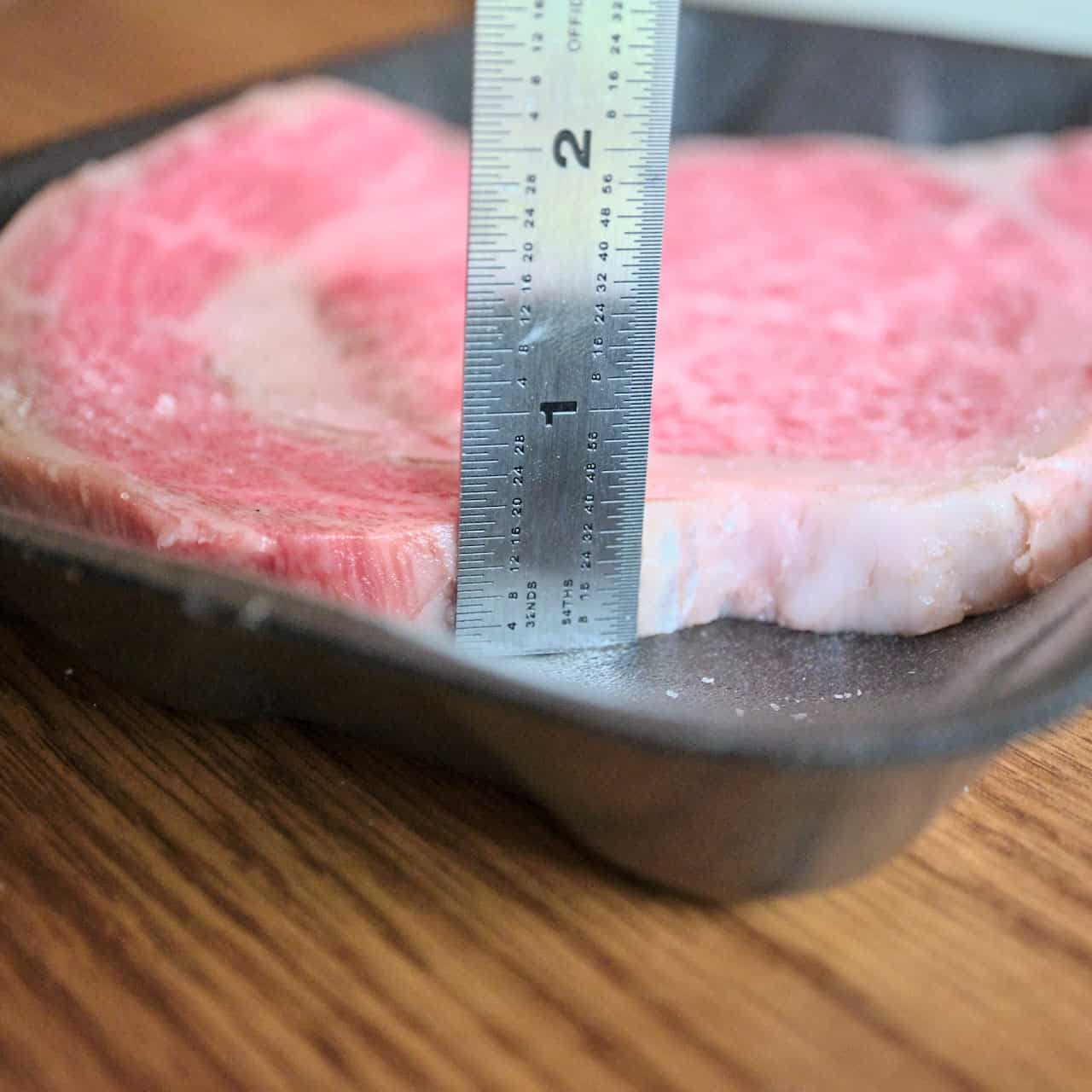
Ingredients
- 1 boneless Wagyu ribeye steak, cut ½-inch thick (about 10 ounces)
- 1 teaspoon Diamond Crystal Kosher salt (or ¾ teaspoon fine sea salt)
- ½ teaspoon vegetable oil (to grease the pan)
Accompaniments (for dipping)
- Wasabi
- Flaky sea salt (Maldon or another fancy fleur de sel)
- Ponzu sauce
- Teriyaki sauce
How to Cook Wagyu Ribeye Steak

Salt the steak an hour ahead
One hour before cooking, remove the wagyu ribeye from the refrigerator, pat it dry with paper towels, and season it evenly with salt. Let the steak sit at room temperature until it is time to sear to dry brine the steak with the salt.
(You can salt up to two hours in advance. But, if you can't salt at least 45 minutes before, don't pre-salt the steak. Salt the steak right before cooking. It needs about an hour for the dry brine effect.)
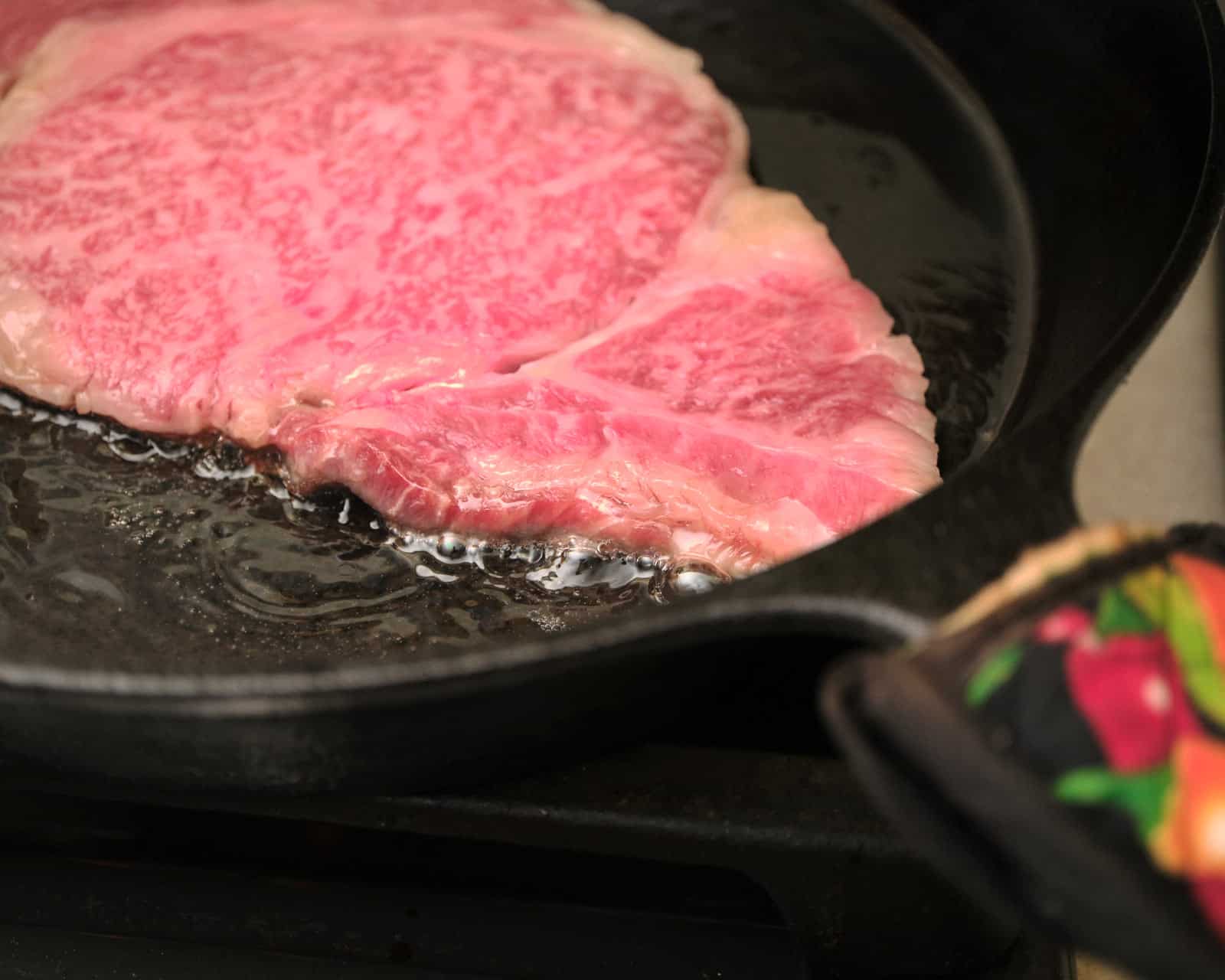
Preheat the pan
At least 30 minutes before cooking, put a cast iron skillet in an oven and heat at 400°F to get the pan ripping hot. (If you're using a stainless steel-clad aluminum pan, preheat for at least 20 minutes.)
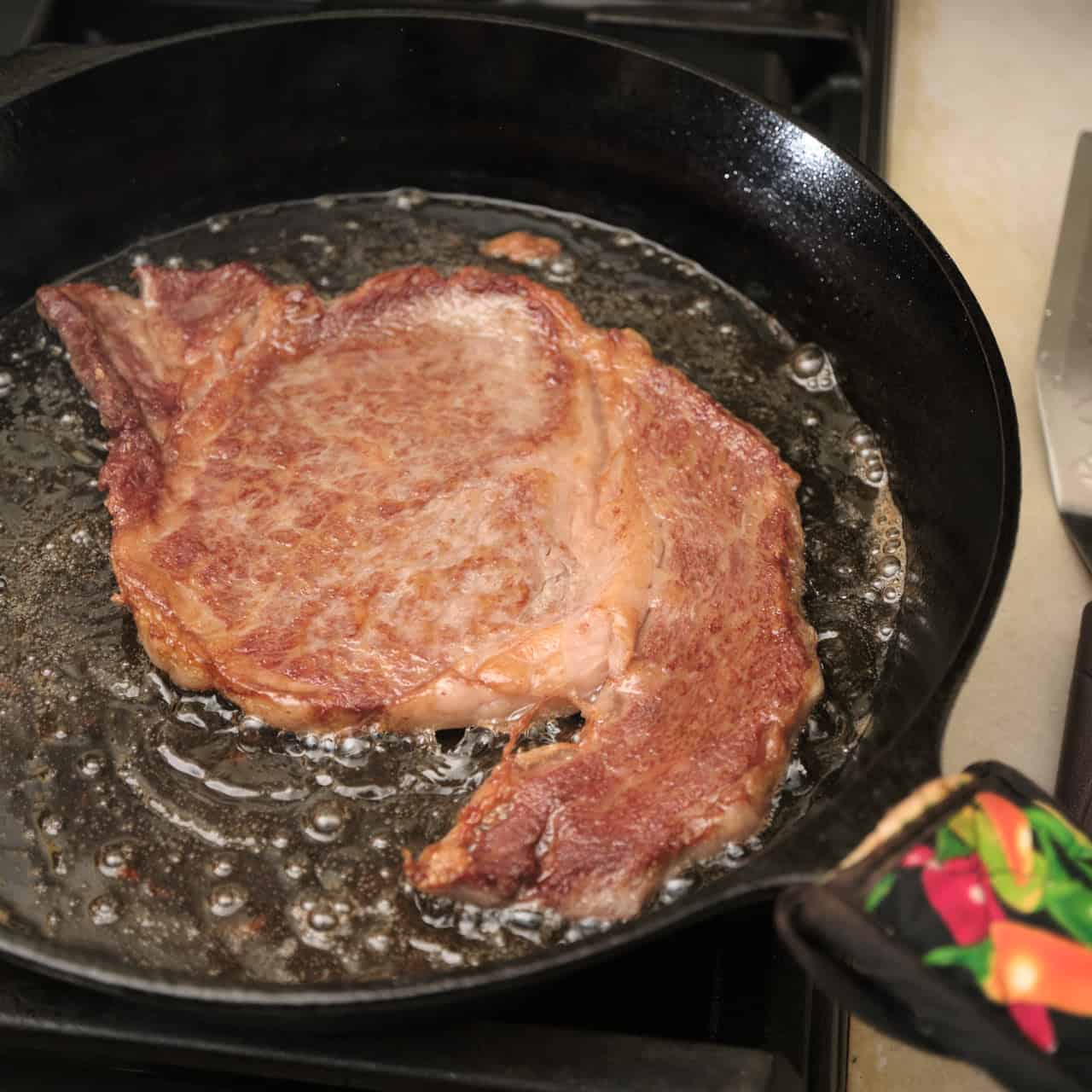
Cook the steak
Move the skillet from the oven to the stovetop and turn the burner to medium high heat. (Carefully! The pan is hot!) Put the steak in the pan and sear without moving for about 2 minutes, until browned on the bottom. Flip the steak, and sear for about 2 minutes, until browned on the bottom or until the center of the steak reads 130°F on an instant-read thermometer. (Getting a reading on a ½-inch thin steak is difficult.) Immediately move the steak from the pan to a serving plate.
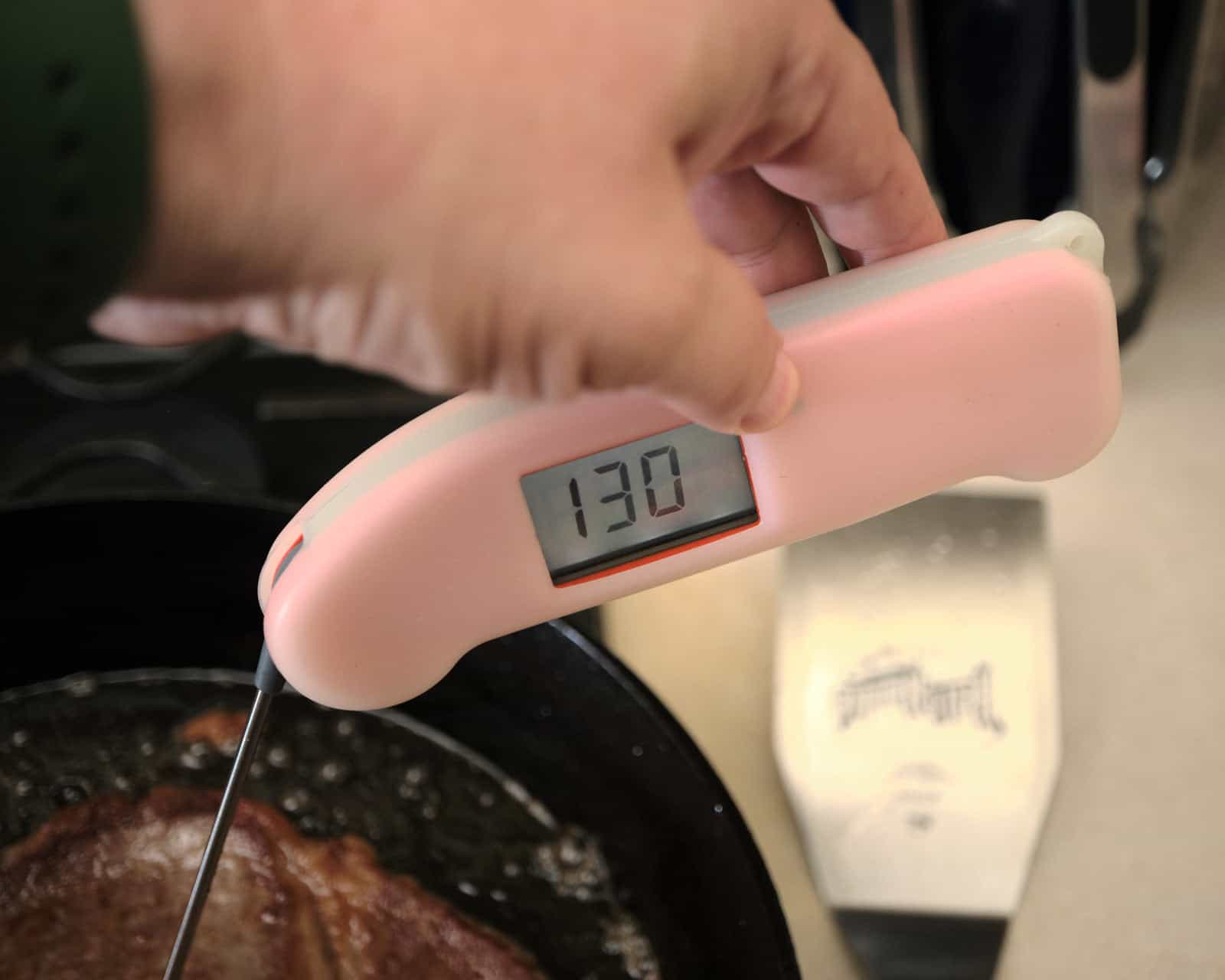
Rest and serve
Rest the steak for 5 minutes, then serve, and enjoy! (I slice the steak into bite-sized pieces and give each one a little sprinkle of flaky salt, a little wasabi, or a dip in ponzu sauce.)
Equipment
A heavy 10-inch to 12-inch skillet. (I recommend a cast iron skillet or a heavy All-Clad stainless steel-clad aluminum skillet.)
Serving Suggestions
Wagyu beef is VERY filling. I know you're thinking, "I eat a whole tomahawk steak by myself, don't tell me it will fill me up." Believe me, a little wagyu goes a long way. My 9-ounce ribeye was enough for 2 to 3 people. Assume you will need 3 to 5 ounces of ribeye per person, depending on how hearty of an eater they are.
Following the Kobe restaurant's lead, I served my wagyu ribeye with little bowls of dipping sauce for each person. I like a bowl of flaky sea salt (like Maldon salt), wasabi (for a bit of heat), and ponzu sauce (the salty-citrusy taste helps balance the fatty meat.) I cut the beef into bite-sized pieces, sprinkle one with some salt flakes, dab a little wasabi on another, and give a third a quick dip in the ponzu.
Frequently Asked Questions
Why is Wagyu beef so good?
Because all that intramuscular fat melts in your mouth. Not only is Wagyu beef fattier than regular beef, but Wagyu fat is also higher in monounsaturated fats (the good fat). Wagyu fat melts below body temperature - 97°F / 33°C - so it melts in your mouth as you eat it. (Regular beef fat melts at 106°F / 41°C, so you melt it a little while cooking. I like my regular beef steaks cooked medium rare because that temperature starts to melt the intramuscular fat.)
What is the best way to cook a Wagyu Ribeye steak?
The best way to cook Wagyu Ribeyes is in a pan preheated to medium-high heat (400°F) for about 2 minutes a side. I like cast iron for this, preheated in a 400°F oven so the entire pan is evenly heated and ripping hot, but any heavy pan will do. (Like an All-Clad or other stainless steel-clad aluminum pan). This should give you a medium-rare to medium steak, but most Wagyu steaks are cut so thin that specific doneness is hard to get. I cook them until they are just browned on the bottom, then flip them. The tender fat more than makes up for any overcooking.
Room temperature before searing
Why rest the steak at room temperature for an hour before cooking? The steak cooks more evenly at room temperature, not at refrigerator temperature.
Also, I like to salt my steaks early to give them a dry brine effect, and that takes about an hour for the salt to work its way into the meat.
What kind of oil should I use?
I wouldn't use extra-virgin olive oil for this recipe. Not because of the high heat; despite what you've read, olive oil is fine for high-heat cooking. It's the cost. When heated, Olive oil loses its distinctive flavor, so it tastes the same as any other oil. I prefer a cheaper neutral-flavored oil like vegetable oil or grape seed oil. (Yes, it's OK to use olive oil: https://www.seriouseats.com/cooking-with-olive-oil-faq-safety-flavor)
Why use a cast iron pan?
Because cast iron holds on to heat so well. Cast iron is like a heat battery that takes a long time to heat up and then a long time to cool down - or, in this case, lose its heat to the steak.
That makes preheating cast iron a problem. It takes a long time to preheat, and on the stovetop, the heat does not spread out on the pan. (That's why I preheat in the oven.)
But any heavy skillet or pan will work for this recipe, so if you have an All-Clad frypan you love (or your favorite brand of heavy skillet), you can use that instead.
Thin Steak (½-inch) vs Thick Steak (1-inch or more)
The recipe has cooking time for ½-inch thick Wagyu ribeyes, the only ones I could find in my local stores. If you get a thicker Wagyu steak, increase the cooking time.
For a 1-inch thick steak, increase the searing time to 3 minutes a side; for a 1½-inch thick steak, increase the searing time to 4 minutes a side. With the thicker steaks, an instant-read thermometer check gets more critical. You want 130°F in the thickest part of the steak for medium-rare. Check it after flipping and every minute after that, pulling it when you get to 130°F. (You can give the steak an extra flip or two if it is browning too quickly.)
Meat thermometer/Instant Read Thermometer
It's hard to take the temperature of a ½-inch thick steak. There isn't much meat to work with. You need an excellent instant-read thermometer with the sensor in the exact tip. Push the thermometer through slowly and take the lowest reading you see as you pass through the steak.
That said, thin steaks are difficult to cook to a specific doneness. I don't worry about doneness, just a quick browning on both sides. If it is still pink in the middle, I am happy. But even if I overcook thin-cut Wagyu a little, it is still mouth-wateringly tender.
Can I grill Wagyu Ribeye steaks?
You can...but it's tricky. You must cook them hot and fast and get them off the grill immediately because there will be flare-ups. (So. Many. Flare-ups.) All that delicious intramuscular fat? It will be dripping through your grill grate and trying to start a grease fire. Watch the steak and move it if the coals below hint at a flare-up. Again, about 2 minutes a side.
Can I reverse sear Wagyu ribeyes?
Not with the ½-inch thin cuts I find at my local stores. They are WAY too thin for a reverse sear.
If you have an extra-thick wagyu ribeye, 1 ½ inches or thicker, especially bone-in, then a Reverse sear is a great idea. Follow the reverse sear ribeye instructions in my Grilled Teriyaki Ribeye Steaks, Reverse Seared recipe, but skip the teriyaki sauce marinade. (It's too heavy for this recipe - but you can use it as a dipping sauce afterward if you want). Also, make sure to put a drip pan under the indirect side of the grill, and watch out for grease fires.
Print
Wagyu Ribeye Steak Recipe
- Total Time: 1 hour 4 minutes
- Yield: 3 servings 1x
Description
How to Cook Wagyu Ribeye Steak. Gorgeous fatty Wagyu ribeye is best when pan-seared quickly on the stovetop.
Ingredients
- 1 boneless Wagyu ribeye steak, cut ½-inch thick (about 10 ounces)
- 1 teaspoon Diamond Crystal Kosher salt (or ¾ teaspoon fine sea salt)
- ½ teaspoon vegetable oil (to grease the pan)
Accompaniments (For Dipping)
- Wasabi
- Flaky sea salt (Maldon or another fancy fleur de sel)
- Ponzu sauce
- Teriyaki sauce
Instructions
- Salt the steak an hour ahead: One hour before cooking, remove the wagyu ribeye from the refrigerator, pat it dry with paper towels, and season it evenly with salt. Let the steak sit at room temperature until it is time to sear to dry brine the steak with the salt. (You can salt up to two hours in advance. But, if you can't salt at least 45 minutes before, don't pre-salt the steak. Salt the steak right before cooking. It needs about an hour for the dry brine effect.)
- Preheat the pan: At least 30 minutes before cooking, put a cast iron skillet in an oven and heat at 400°F to get the pan ripping hot. (If you're using a stainless steel-clad aluminum pan, preheat for at least 20 minutes.)
- Cook the steak: Move the skillet from the oven to the stovetop and turn the burner to medium-high heat. (Carefully! The pan is hot!) Put the steak in the pan and sear without moving for about 2 minutes, until browned on the bottom. Flip the steak, and sear for about 2 minutes, until browned on the bottom or until the center of the steak reads 130°F on an instant-read thermometer. (Getting a reading on a ½-inch thin steak is difficult.) Immediately move the steak from the pan to a serving plate.
- Rest and serve: Rest the steak for 5 minutes, then serve, and enjoy! (I slice the steak into bite-sized pieces and give each one a little sprinkle of flaky salt, a little wasabi, or a dip in ponzu sauce.)
Notes
Stovetop preheating: If you don't want to use the oven, preheat a cast iron skillet on the stovetop over medium-high heat for 15 minutes...at least. If you're using a stainless steel-clad aluminum pan, you can preheat on the stovetop, and it will only take 5 minutes of preheating.
- Prep Time: 1 hour
- Cook Time: 4 minutes
- Category: Sunday Dinner
- Method: Pan-searing
- Cuisine: Japanese
Would you like to save this recipe?
Nutrition
- Serving Size: 3 ounces
- Calories: 353
- Sugar: 0 g
- Sodium: 462.1 mg
- Fat: 33.5 g
- Carbohydrates: 0.4 g
- Protein: 12.4 g
- Cholesterol: 70.1 mg
Related Posts
Pan Seared Ribeye with Shallot Herb Butter Baste
Sous Vide Chuck Steak Recipe (24 hours to tenderness)
Grilled Tomahawk Steak (Long Bone Ribeye, Reverse Seared)
Grilled Teriyaki Ribeye Steaks, Reverse Seared
Instant Pot Japanese Curry
Okonomiyaki Recipe
Instant Pot Miso Ramen
Enjoyed this post? Want to help out DadCooksDinner? Subscribe to DadCooksDinner via email and share this post with your friends. Want to contribute directly? Donate to my Tip Jar, or buy something from Amazon.com through the links on this site. Thank you.



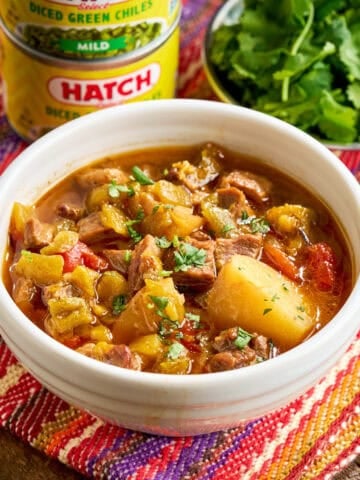
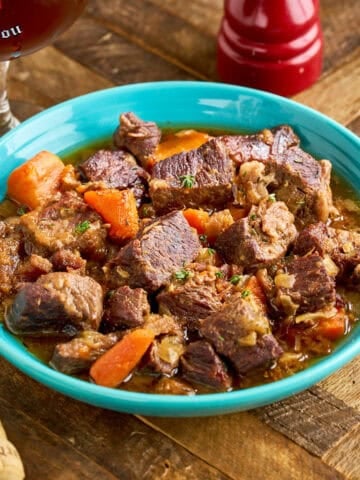
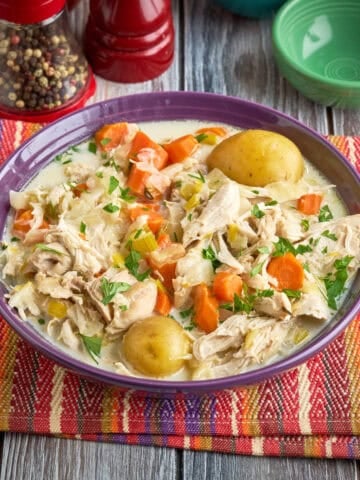
Ike says
Easy and yummy!
Mike Vrobel says
Thanks!
Tori M says
Looks amazing!!!
Mike Vrobel says
Oh, it is. Try it!